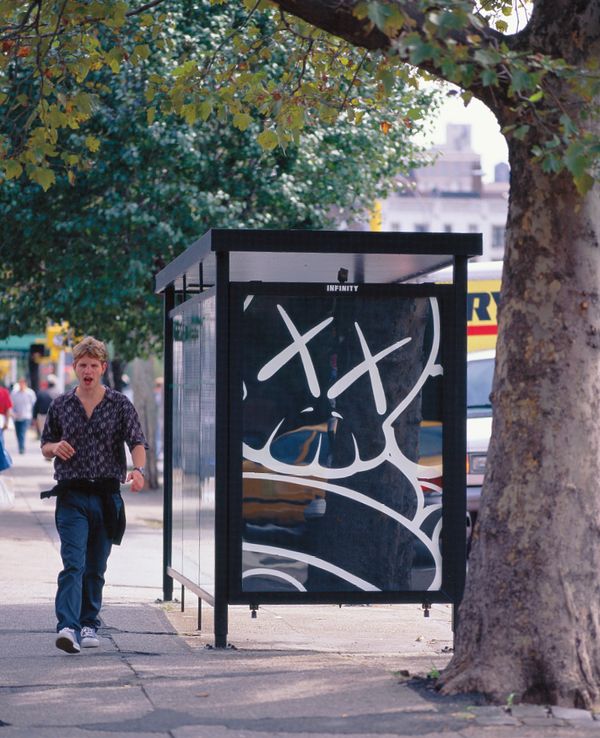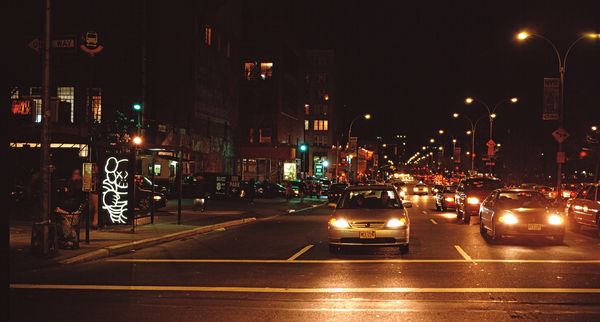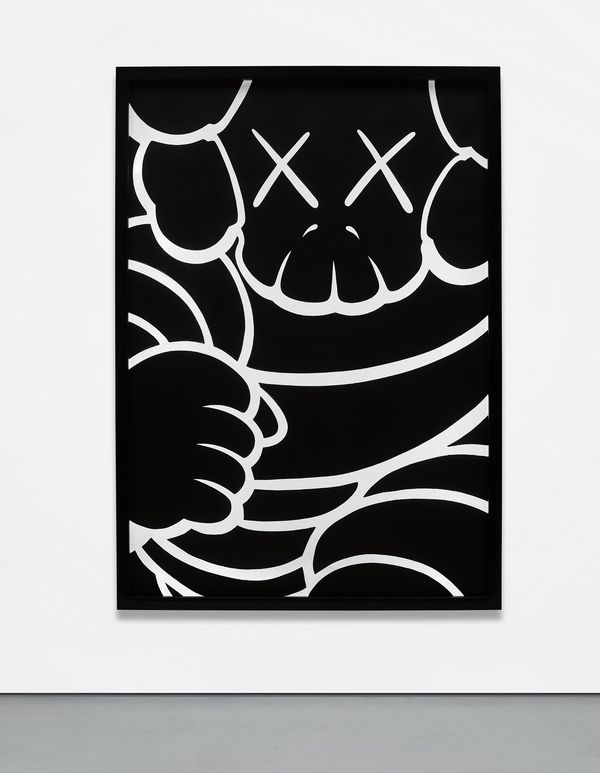KAWS Running Chum - Bus Stop, 2001, exhibited in At Home I'm A Tourist, CAC Málaga. © KAWS 2018.
The protagonist of Chum, on offer in our 20th Century & Contemporary Art Day Sale in London, is one of KAWS' most iconic characters. Based on the Michelin Man, the figure draws on one of the oldest and most recognizable trademarks from the world of advertising.
Engaging a visual and cultural framework that speaks directly to a universal audience, "Chum incorporates a childlike humor, conveyed through the playful distortion of its human-like character and vibrant colors. Inoffensive and invented creatures like Chum allow the viewers the pleasures of fantasizing and daydreaming, and assert the liberation of the repressed child in all of us," wrote Mónica Ramírez-Montagut for KAWS, published in 2010. Imbued with the artist's signature iconography of the skull and crossed eyes—a constant in the artist's visual language—the closely cropped, stylized figure is instantly recognizable; yet the artist's characteristic style has, in itself, since become equally as prominent in its own right. In the same way that the original figures host an intrinsic cultural and visual significance, KAWS' art is now equally as prolific: "like the products in the ads he was altering, his bulbous skulls and X'd eyes became familiar to urban audiences and began to glean attention in the realm of mass culture," wrote Andrea Karnes in 'Pop in the Expanded Field' from KAWS: Where the End Starts, 2017. She quoted the artist himself as saying, "I wanted to work within the language of the ad, to form a dialogue."
Reinterpreting iconic figures from popular culture is KAWS' internationally recognized trademark. Traversing the space between fine art and commerce, the Brooklyn-based artist appropriates familiar imagery from mass media and transforms them in his distinctively cartoonish style. Infiltrating public spaces, the artist presented other works from the rare and distinct Chum series on bus stops.
I wanted to work within the language of the ad, to form a dialogue.
— KAWS
Above from top: Untitled (Chum Houston Street), 2006, acrylic on paper, in situ. Untitled (Houston Street), 2000, acrylic on paper, in situ. © KAWS 2018.
KAWS' notorious visual identity adopts the subliminal powers of advertising, assimilating its effective permeation of imagery in the public consciousness. Rooted in his earlier artistic explorations into the visual syntax of street art, inspired by the culture of downtown Manhattan and the mediation of commercialized aesthetics, Running Chum, with its monochrome graphics and boldly abstracted composition, exemplifies KAWS' iconic style. Inspired by his on-going fascination with graphic design and graffiti, and inherently informed by the works of Pop artists such as Claes Oldenburg, Tom Wesselmann and Takashi Murakami, KAWS firmly asserts his position within the trajectory of and artistic tradition of toys within the visual vocabulary of popular culture. The accessible multiplicity of KAWS' oeuvre is prevalent not only in the global contemporary art market, but also in the realm of fashion and commercial industry, and his manipulation of the current pervasiveness of consumerist imagery has established his reputation worldwide.
Running Chum - Bus Stop exemplifies the artist's belief in the assimilation of fine art and commercialism: "For KAWS, a source found in high art does not translate as a more valuable source than one from the mass media," wrote Mónica Ramírez-Montagut.
The artist's ground-breaking re-imagination of figures such as the Michelin Man-inspired Chum, immaculately rendered in his characteristically clean-cut, graphic use of line and glossy finish, successfully elevates the imagery of popular culture to the level of high art in the public sphere in a fascinating reciprocal dialogue.



